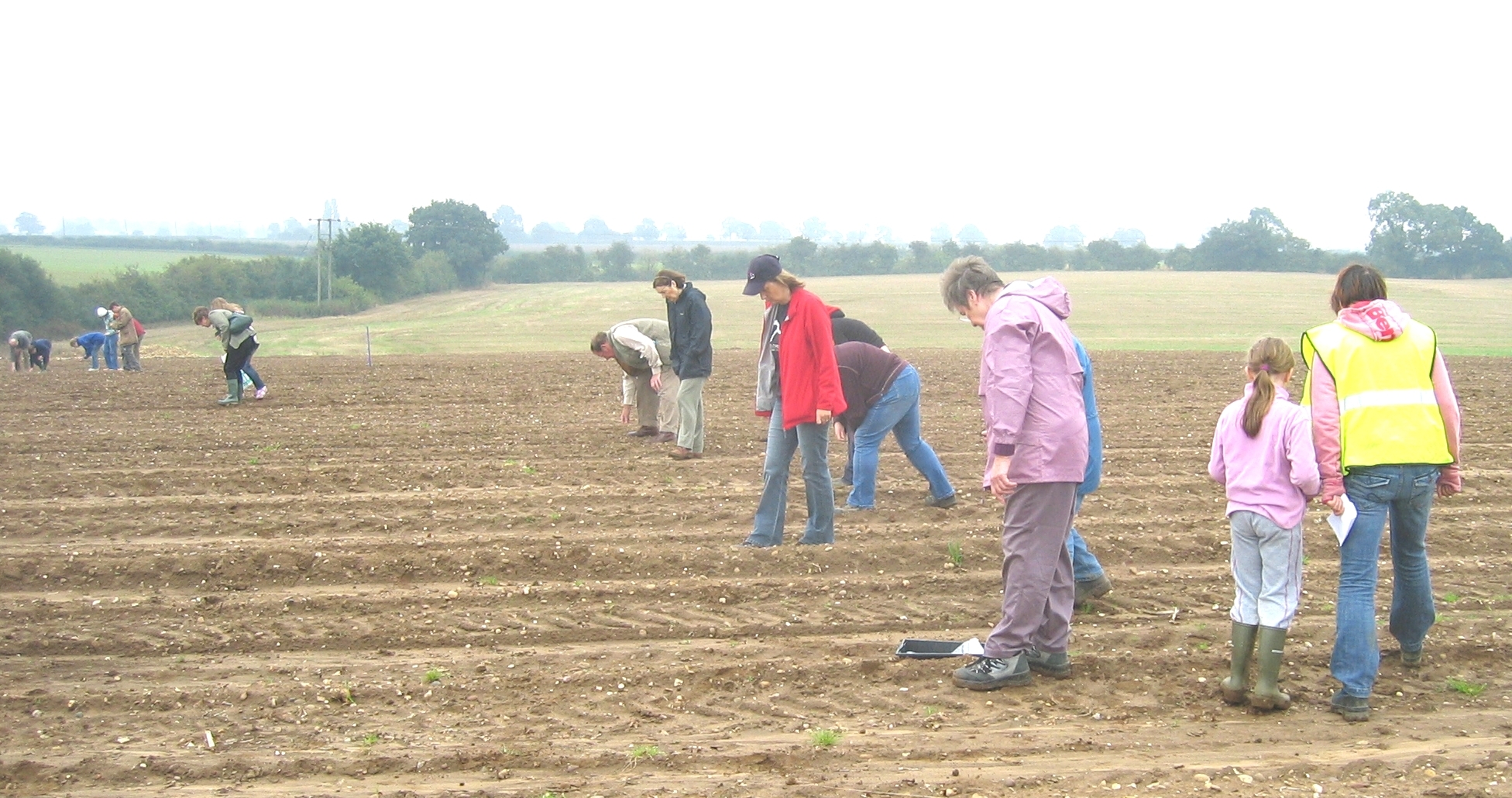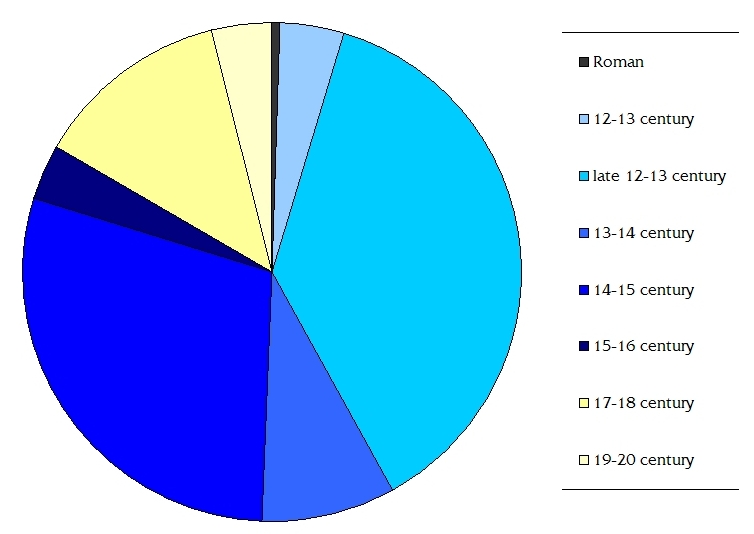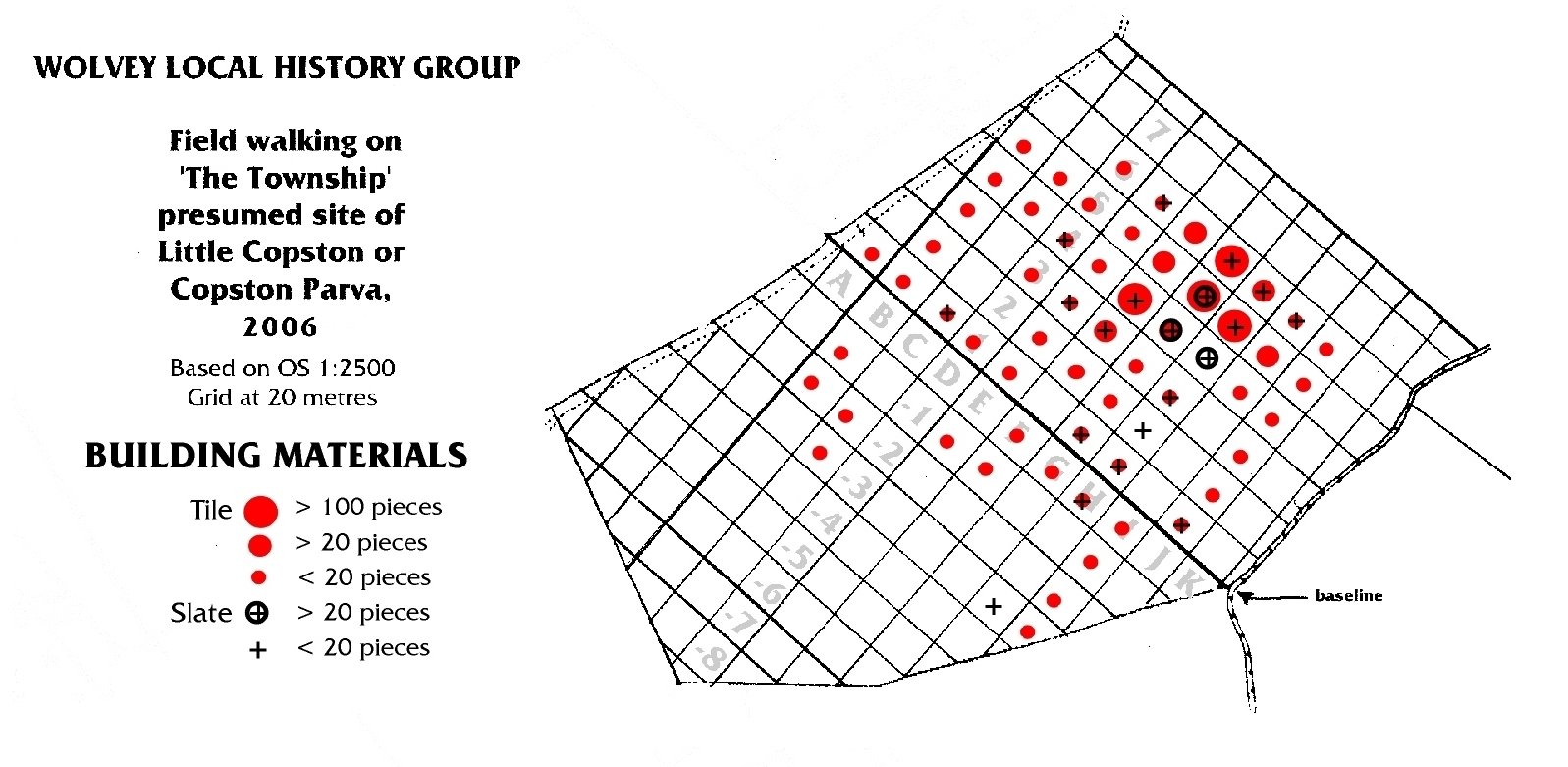Copston
Parva
A
medieval township of Wolvey now deserted
The
name of Copston Parva first appeared in records at the beginning of the
reign of Henry II (1154-1189).
At that time Ivo de Harecourt granted land to Robert Basset
which shortly afterwards, together with other land held by Thomas de
Astleye, was transferred to Combe Abbey. This remained a monastic estate
until the dissolution of the monasteries in the mid-sixteenth century. A
document dating to 1250 records a Chapel at Copston Parva and there
appears to be a further reference to it in 1429. There is a record of
the grant of free warren there by Combe Abbey in 1290 and part of the
land at “Little Copston” was demised by Oliver Adams, the abbot, and
the convent at Combe Abbey, to Christopher Sadeler of Wolvershill for 40
years in 1518.
No
further references to Copston Parva are known after that date and it
is not clear when or why the settlement became depopulated.
We do know some of the land, then known as Copston Fields, was
purchased by the Earl of Coventry in 1653.
William
Dugdale, writing in the mid-seventeenth century, stated that “this
place has for some time past taken the name of Smockington”, a view
subsequently followed in the Victoria County History of Warwickshire.
However, Smockington has had a clear identity and existence
since Domesday times when it was known as Snochantone.
The site of Copston Parva is therefore likely to be
elsewhere. Examination of
the fieldnames in the area revealed a field called “The Township”
implying a settlement in that place.
This site has been examined on three occasions by
the
Wolvey Local History Group
with
the kind permission of the farmer. In 2006 the Group, with Warwickshire Museum Field Services, organised a day's archaeological
fieldwork on
the land to
search for this
deserted medieval
settlement. The
work involved geophysical surveying, the results of which were inconclusive, and
field-walking the conclusions of which are briefly reported here.

A
considerable number of finds were made. Apart from a few prehistoric flint flakes and some Roman pottery, the bulk of the
material comprised potsherds and building materials of
medieval and later date, much of it made in the area with some being
identified as from the Chilvers Coton potteries in Nuneaton. The pottery is analysed in the
pie-chart below:

It
will be noted the the majority of the pottery spans the period from
the 12th to the 16th centuries. This corroborates the few
written records about the settlement (see above).

The
distribution of the finds has also helped to locate the likely area of
main habitation. In the diagram above the incidence of slate and tile suggests the site
of a more substantial building, probably the Chapel referred to in the
records.
|